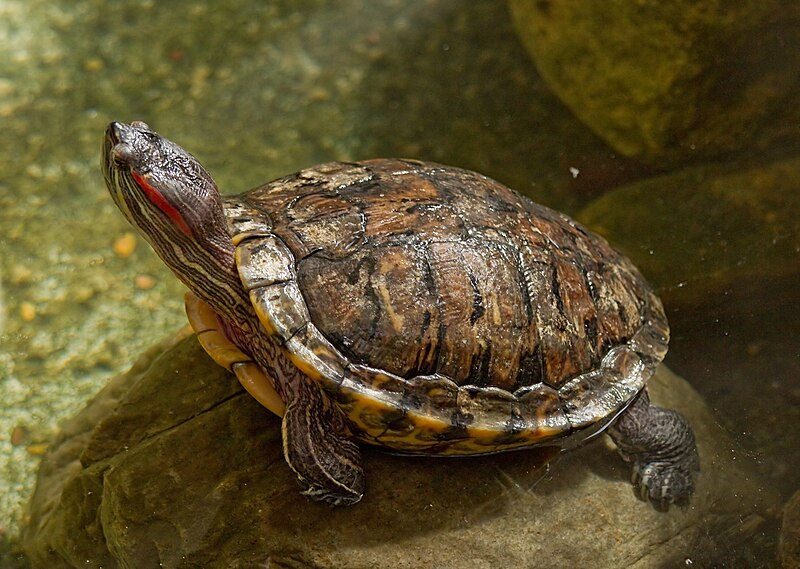Endangered Species Protections Proposed for Western Pond Turtles
- Abigail Lowell
- Nov 10, 2023
- 3 min read

In response to a 2012 petition and 2020 lawsuit from the Center of Biological Diversity, on September 29, 2023 the U.S. Fish & Wildlife Service proposed protecting western pond turtles (Actinemys sp.) as threatened under the federal Endangered Species Act — a recognition that the species is likely to become in danger of extinction within the foreseeable future throughout all or a significant portion of its range.
Based on slight physical differences in their shells, southwestern and northwestern pond turtles were differentiated as subspecies in 2017. Southwestern pond turtles (Actinemys pallida) live in Southern California from Monterey County south into northern Baja California, Mexico. Northwestern pond turtles (Actinemys marmorata) live in Washington, Oregon, Nevada, and northern and central California. The U.S. Fish & Wildlife Service is in the process of designating critical habitat for the turtles.

Western pond turtles are semiaquatic reptiles that are medium in size (usually 4-7 inches long), with larger turtles found in the northern range. They have varied coloration with most appearing olive, dark brown or black with brown or black spots, lines or dashes. The underside of the shell is yellowish with dark blotches or no markings.
The name “pond turtle” is something of a misnomer because these turtles often live in rivers, as well as creeks, ponds, marshes, irrigation ditches and reservoirs, basking on logs and boulders. Although western pond turtles spend much of their time in the water, they nest, lay eggs, and travel on land. During cold winters and hot summers, they burrow into leaf litter or soil to nest and overwinter (a form of hibernation). Western pond turtles can live to be up to 70 years old, and often do not reproduce until they are at least ten years old.
Western pond turtles are omnivorous, generalist, opportunistic eaters that consume a wide variety of food items, including small aquatic invertebrates, insect larvae, fish, tadpoles, frogs, carrion, and plants — basically almost anything they can catch and overpower.
Threats to western pond turtles include disease, invasive species, climate change, habitat loss and fragmentation from land conversion, urban development, dam construction and agriculture. Human activities have fragmented these turtles’ habitat into small pieces with isolated populations that fall victim to inbreeding and reduced genetic diversity. Healthy watersheds and roadless areas are critical for these turtles’ recovery and protection.
Western pond turtles are listed as endangered in Washington State. A respiratory disease epidemic in 1990 in Washington left less than 200 northwestern pond turtles in the state and only two populations in the Columbia River Gorge. Thanks to recovery efforts by the Washington Department of Fish & Wildlife, including juvenile turtle head-start programs in collaboration with Woodland Park Zoo and the Oregon Zoo, there are currently six populations with approximately 800 turtles in the Columbia River Gorge.

The northwestern pond turtle is one of only two native turtle species in Oregon. With more turtles than in Washington, the Oregon Department of Fish & Wildlife considers northwestern pond turtles as sensitive-critical species, meaning that it is facing one or more threats to its populations and/or habitats. Threats to northwestern pond turtles in Oregon include non-native, invasive species such as bullfrogs (Lithobates catesbeianus), large-mouth bass (Micropterus salmoides) and opossums (Didelphidae) that prey on baby turtles, as well as habitat destruction from wetland draining, flood control, agricultural expansion, and land conversion for human development. Newly hatched western pond turtles are about the size of a quarter and particularly vulnerable to predation for the first 2-3 years of their lives, especially if crucial shelter in shallow water and onshore is reduced. Invasive red-eared sliders (Trachemys scripta elegans), a common pet native to the eastern U.S. that are all too often released into the wild by humans, also compete with native turtles for precious, dwindling resources, and habitat.

Western pond turtles are the only remaining freshwater turtle species native to California, and are listed as a Species of Special Concern by the California Department of Fish & Wildlife for their dwindling populations, especially imperiled by climate change and drought. A relatively large and genetically important population of western pond turtles lives in Lake Elizabeth, located approximately 65 miles northeast of Los Angeles in the northern Antelope Valley. In 2013 the lake level began to drop due to drought conditions and water diversion for fire suppression, and by 2014 the lake was at its lowest level in recent history, imperiling the resident pond turtles. In fall 2014, the California Department of Fish & Wildlife rescued 52 turtles from the lake, where they were cared for in captivity at UCLA and the Behler Chelonian Center in Ojai, California before being released again in June 2015 once suitable conditions returned in Lake Elizabeth. Recovery and reintroduction efforts are also underway in Golden Gate Recreation Area, Yosemite National Park, and Ventura County.
The western pond turtle’s proposed threatened listing under the Endangered Species Act is an important step toward the species’ recovery and conservation.


Comentarios